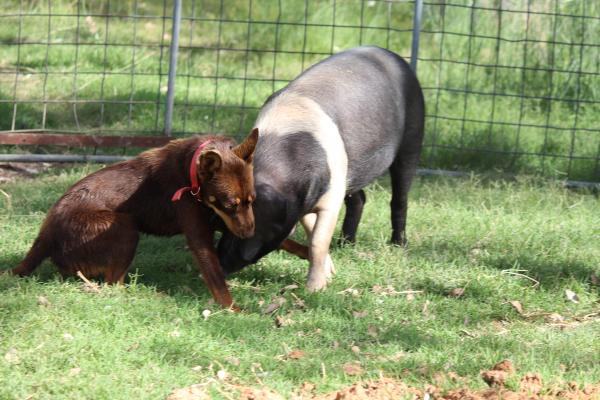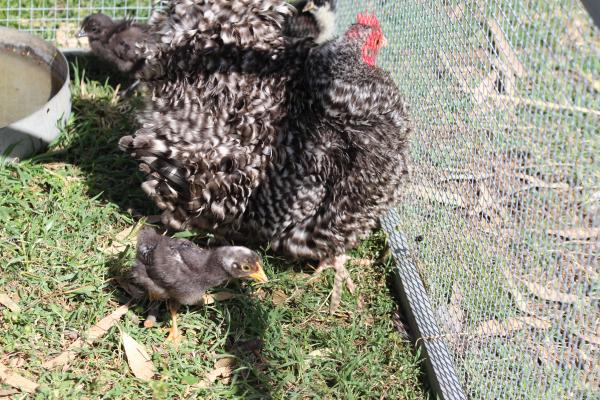By Judy Barnet, Ag Columnist
Rising at 5.30 am on Monday morning, I had the requisite black coffee, saw Richie off to work, turned the sprinklers on in the garden and prepared milk for the calves and lambs. CJ received an early phone call and stood in the only place we get reception looking out towards the dam. “Emu!!” she cried excitedly to me. I grabbed the camera, ignored a barking Dora who thought we were heading off to feed the calves, and trotted off on foot towards the dam. Halfway down I remembered our guests would love to see them too and sent them a quick message. However, it appeared that CJ had led me on a wild bird chase of another variety as they were nowhere to be seen.
I was on my way back up when the guests appeared. I told them it was a false alarm but we decided instead to go down to the dam and see the swans. They were frantically trying to rebuild their nest which was in danger of floating away after being flooded by last Friday’s rain. Sadly, the next day the swans abandoned it. Jacques and Marcel, our two French campers, took their kayak over to the nest and confirmed there were four eggs in the nest, which was waterlogged. That same day the pelicans also took flight, however, one family stayed put for reasons unknown.
“Here an emu, there an emu…” Our guests may have missed out on seeing an emu but on my way into town the next day I saw a pair of them with at least a dozen chicks. What a lovely sight! Of course, on the way home from town, I also spotted a mob of them in a different spot. Sorry, Marnie and Alex, maybe next time!
I have been bogged down in paperwork for a couple of days this week – it is the time of year for AGMs. I had a report to write for the Rare Breeds Trust plus the usual financial reports which needed to be checked and uploaded. My main goal for the RBTA this year is to conduct a membership drive. We currently have 79 members in Australia and membership is our main source of income. At $35 per annum ($20 for pensioners), it is not a lot of money to work with. The RBTA receives no government support and is run entirely by volunteers. I would like to work towards getting memberships from the Associations whose stock we endeavour to preserve, e.g. the Welsh Black Cattle Association, as their memberships would be mutually beneficial.
My other goal is the organisation of our 2nd Annual Auction, raising funds for our Genebank. This is held during International Rare Breeds Week in May 2022. This is a huge job and I really should have started already approaching businesses for donations of goods and services by now. I donate a two-night stay at our cottage for the auction so I will have more to say about this as the time approaches.
I mentioned a while ago that it was time to get my two Shorthorns and Angus heifer in calf so I was delighted to find a local A.I. (Artificial Insemination) technician. I have been eagerly looking online to find the right sire for the girls! I knew exactly what traits I was looking for in the bull. A lot of the modern Shorthorns just didn’t meet my criteria and most of the ones I shortlisted were not available in Australia, had no stock left, or were beyond my budget. However, I finally located a bull born in 1986 that had semen available at the Bargain Price Tag of $15 per straw. Yamburgan Rocky 4th, a white Shorthorn Bull is to be the Sire! Some of the bulls I looked at were over $100 per straw and, of course, there is no guarantee the heifers will take on the first attempt. Sexed semen is also available in some breeds, however, it comes with a hefty price tag and lower viability.
I did consider English Longhorn to go over the Shorthorns, I believe the last remaining herd of them was dispersed in 2018 and the semen in the catalogue had all been sold. I am still trying to track down where the herd went though as the breed is on the RBTA’s watch list as Critically Endangered. I am tempted to buy a few straws just in case I need them one day, however, I have to keep in mind my main business is breeding stud sheep and not to get sidetracked. It’s all well and good to run a few cattle now but as soon as the feed drops off so will condition on the cattle. Traprock country is more suited to sheep or steers than breeding cattle. Not that my heifers couldn’t do with dropping a bit of weight!
The calves are all doing well and I get so much pleasure out of rearing them and seeing them grow. I am tempted to get a couple more. After all, there are six teats on the feeder and only four calves drinking from it (the fifth calf is on a bucket).
The only downside to feeding the calves is the trip from my ute to the calf pen. The two Wessex Saddleback pigs I brought for Jumpers and Jazz in July have grown to a considerable size and have worked out my routine. When they hear the ute pull up at the yards they come flying up the hill and squeeze through the gate. Squealing with delight at the smell of milk, they hurl themselves at me trying to get the bucket. I have tried all sorts of tricks to divert them, to no avail. However, it won’t be an issue much longer with Christmas approaching. It will be a case of this little piggy went to the butcher! I have a couple of favours to repay. A very kind neighbour has always been generous with help when needed over the years so I think a nice leg of ham and some bacon will be heading their way! One of the gilts is a very good type and would make a good breeder so I might see if I can find a home for her.
Shearing has been organised for 15 November, weather permitting, and the day can’t come soon enough with ongoing fly strike issues. We also need to drench and vaccinate on the day so I have convinced Richie we will need to employ someone to help this year. Shearing will work in well for my plans to enter sheep in the Stanthorpe Show at the end of January.
Well, it is approaching the deadline for the next edition so I will finish for now. Hope you all have a wonderful weekend.









